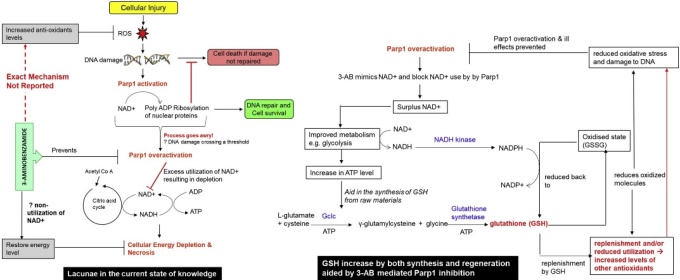Potential of Inhibition of Poly ADP Ribose Polymerase as a Therapeutic Approach in Blast Induced Cochlear and Brain Injury
Flowchart illustrating the various stages of using chemicals to inhibit PARP1, which increases anti-oxidant levels in cells, possibly due to the increased production of GCLC and GSH enzymes.
Principal Investigator: Vijaya Prakash Krishnan Muthaiah, PT, PhD
Sponsor: Hearing Health Foundation
Awarded: July 2019
Description: To determine the mechanisms underlying both the peripheral and central aspects of blast-induced auditory neurodegeneration; and to identify and characterize potential pf PARP inhibition as a therapeutic targets for manifestations of blast-induced traumatic brain injury, including hearing loss, cochlear synaptopathy, tinnitus, and associated deficits.
When DNA is damaged by stress, cells activate Poly ADP Ribose Polymerase 1 (PARP1) as part of the repair process. Partially inhibiting PARP1 using chemicals has beneficial effects including increasing anti-oxidant levels in the cells. This study aims to understand how inhibiting PARP1 can help in the treatment of blast-induced traumatic hearing loss and tinnitus.
